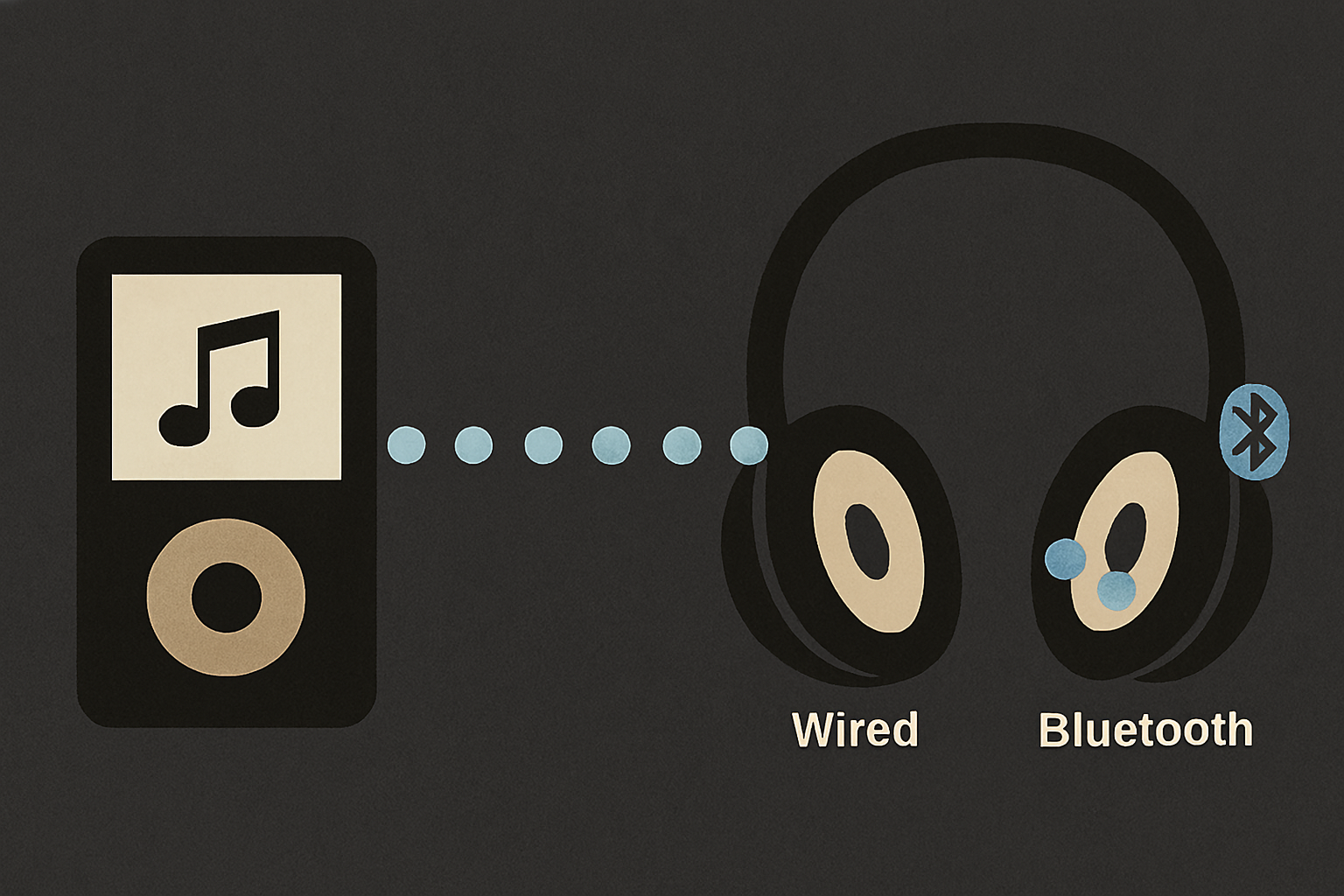Bluetooth audio is lossy by design—every codec compresses music to fit a narrow wireless pipe. Wired playback, by contrast, preserves the full breath and body of the original signal. Let’s unpack this bottleneck with evidence.
“Bluetooth asks music to shrink to fit. Wired lets it breathe.”
Bluetooth audio has become the default for convenience—but fidelity pays the price. Every Bluetooth codec, from SBC to LDAC, is a compromise between bandwidth, latency, and battery life. The result? Music is compressed, reshaped, and sometimes distorted before it reaches your ears.
🔍 What Makes Bluetooth Lossy?
Bluetooth codecs are tasked with compressing audio data to fit within limited bandwidth. Even the best codecs must discard information to transmit wirelessly:
- SBC (Subband Codec): The mandatory default. Bitrate maxes out around 328 kbps, with aggressive compression and poor transient handling.
- AAC (Advanced Audio Coding): Used by Apple devices. Bitrate varies, but typically around 256 kbps. Better than SBC, but still lossy.
- aptX / aptX HD: Qualcomm’s solution. aptX HD reaches 576 kbps, but still compresses audio and introduces artifacts.
- LDAC: Sony’s high-resolution codec. Peaks at 990 kbps, but dynamically drops to 330 kbps depending on connection quality.
Even LDAC at its best is still compressing CD-quality audio (1,411 kbps) or high-res files (2,304 kbps+)—meaning loss is inevitable.
📊 Instrument-Based Evidence
Let’s visualize the damage:
1. Frequency Response Graphs
Lossy codecs often roll off high frequencies or introduce dips in the midrange. Wired playback shows a flat, full-spectrum response. Bluetooth? Not so much.
Graphic suggestion: A side-by-side frequency response comparison of LDAC vs wired playback, showing high-frequency roll-off and midrange compression.
2. Bitrate vs Fidelity Table
| Codec | Max Bitrate | Compression Type | Fidelity Level |
|---|---|---|---|
| SBC | ~328 kbps | Lossy | Low |
| AAC | ~256 kbps | Lossy | Medium |
| aptX HD | ~576 kbps | Lossy | Medium-High |
| LDAC | ~990 kbps | Lossy | High (but variable) |
| Wired PCM | 1,411 kbps+ | Lossless | Full Fidelity |
3. Transient & Distortion Analysis
Bluetooth codecs struggle with fast transients—snare hits, cymbal crashes, vocal sibilance. These are smeared or softened. Wired playback preserves the attack and decay with clarity.
🎙️ Why This Matters
Music is more than notes—it’s texture, space, and emotion. When Bluetooth compresses audio, it flattens the soundstage, blurs the imaging, and dulls the emotional impact. Wired playback restores the breath and nuance.
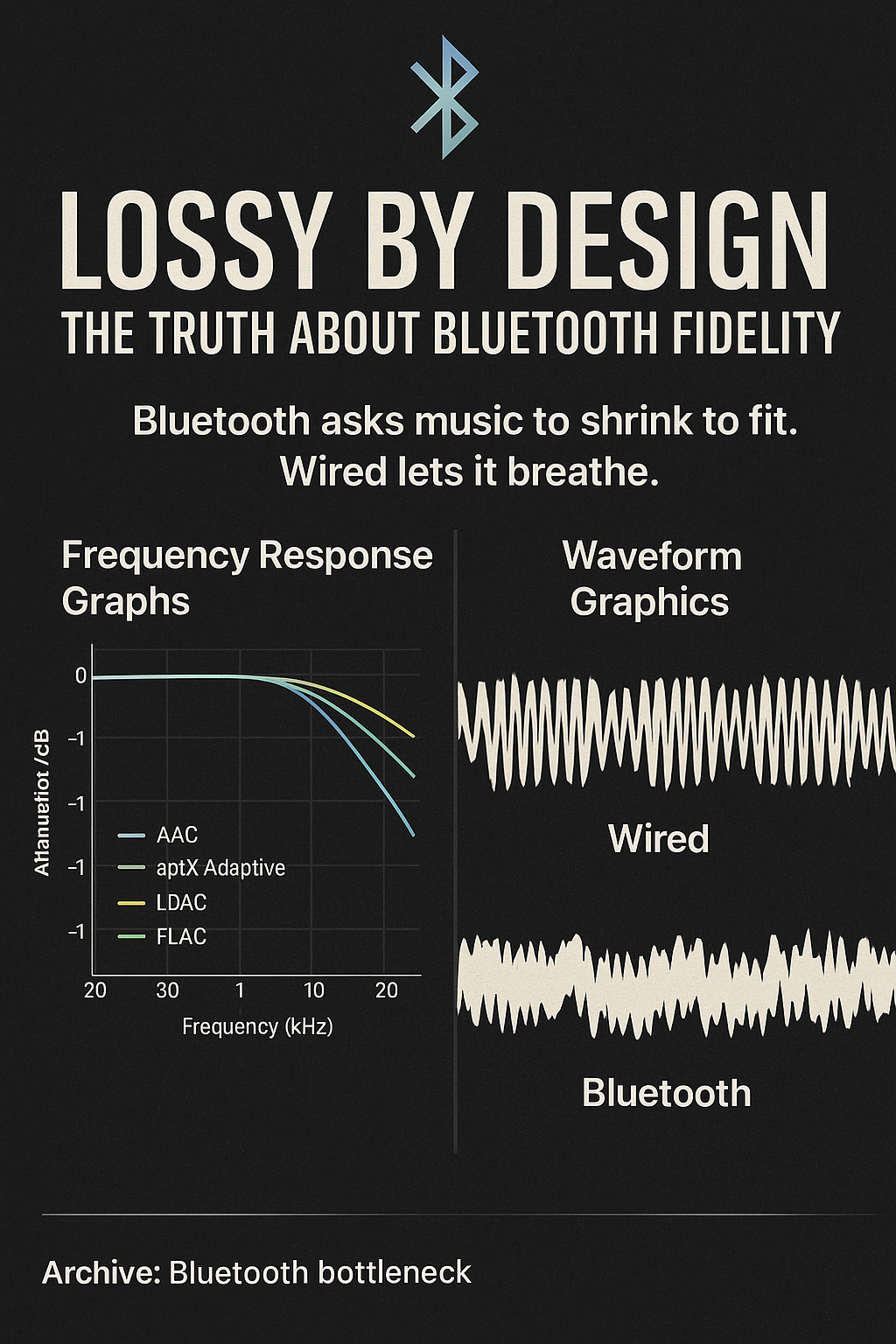
Frequency Response Comparison
This graph shows how LDAC Bluetooth playback rolls off high frequencies and compresses the midrange, while wired playback maintains a flat, full-spectrum response.
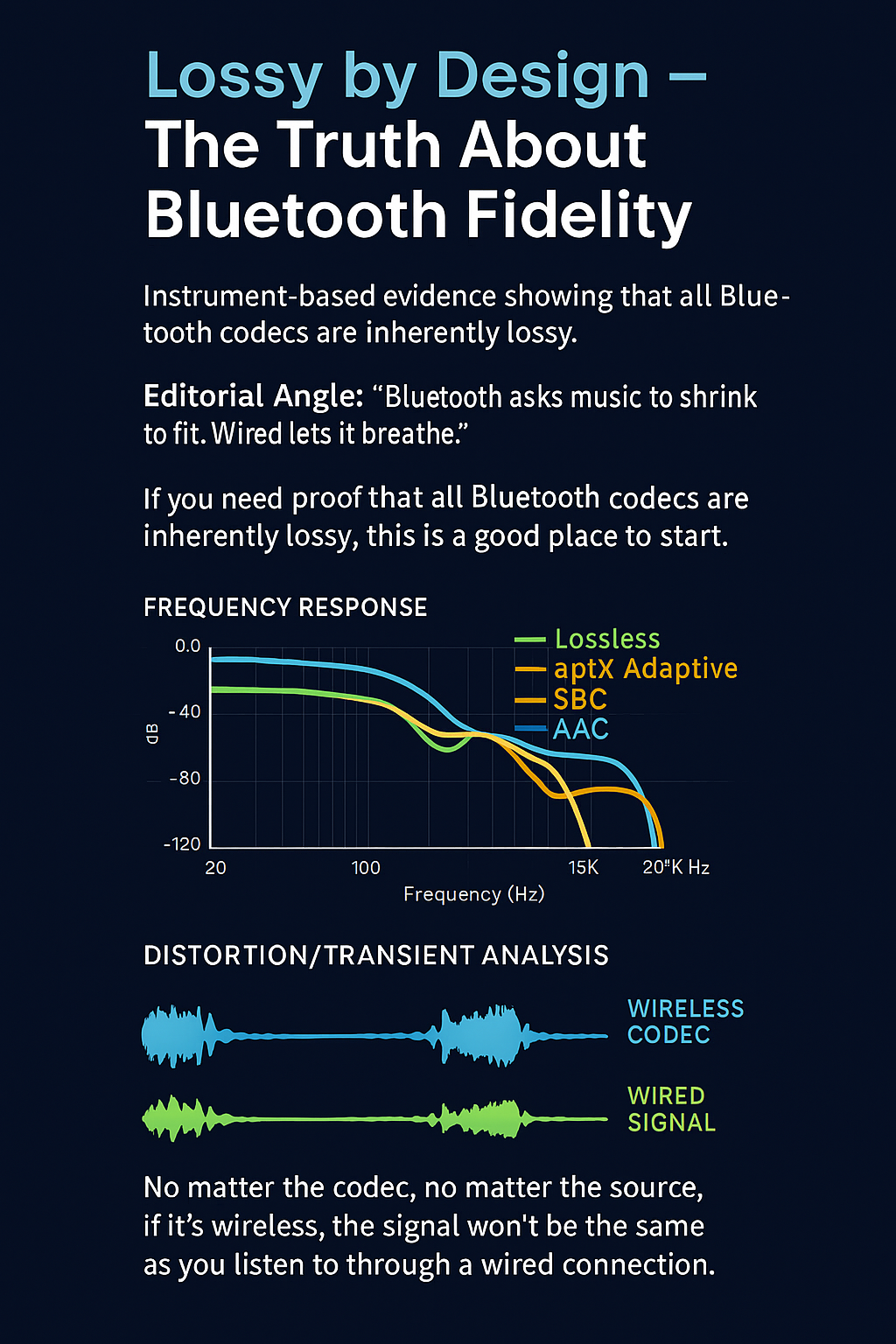
Waveform Transient Analysis
Here, a snare hit is visualized in both wired and LDAC playback. The wired signal preserves sharp transients and full amplitude, while the Bluetooth version appears softened and less dynamic.
Harking back to the last article, in both “Josephine” and “Keep Talking,” the difference between wired and Bluetooth playback becomes most noticeable during moments of dynamic contrast, spatial layering, and transient detail—especially in intros, vocal passages, and instrumental peaks.
🎧 Josephine (2019 Remaster) – Chris Rea
- Intro:
Soft percussion and ambient pads create a wide stereo field. Wired playback reveals shimmer and spatial depth; Bluetooth compresses the stereo spread and softens transients. - Vocal Entry:
Chris Rea’s voice sits dead center, supported by delicate guitar phrasing. Wired mode preserves the phantom center illusion; Bluetooth introduces slight smearing. - Guitar Solo:
The solo floats across the soundstage. Wired playback maintains separation and air; Bluetooth playback collapses the imaging slightly.
🔊 Keep Talking (Live) – Pink Floyd
- Intro Narration & Guitar Swells:
Stephen Hawking’s voice and ambient guitar textures are layered across the stereo field. Wired playback reveals full width and decay; Bluetooth dulls reverb tails and narrows the space. - Chorus Entry:
Vocal harmonies and backing instrumentation bloom. Wired mode preserves separation between voices and instruments; Bluetooth blends them into a flatter mix. - Guitar Solo:
David Gilmour’s solo showcases tone and dynamics. Wired playback captures bite and sustain; Bluetooth rounds off the attack and softens the emotional impact.

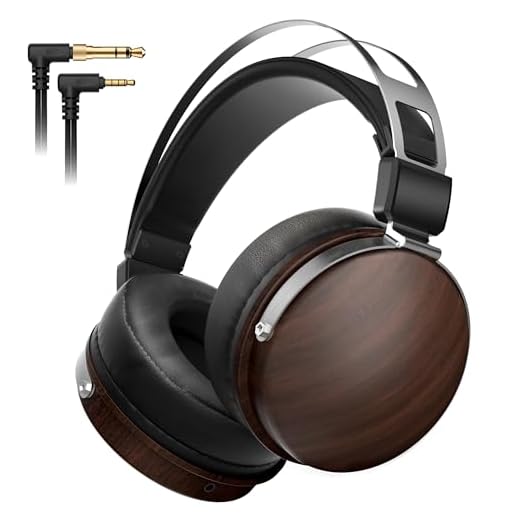

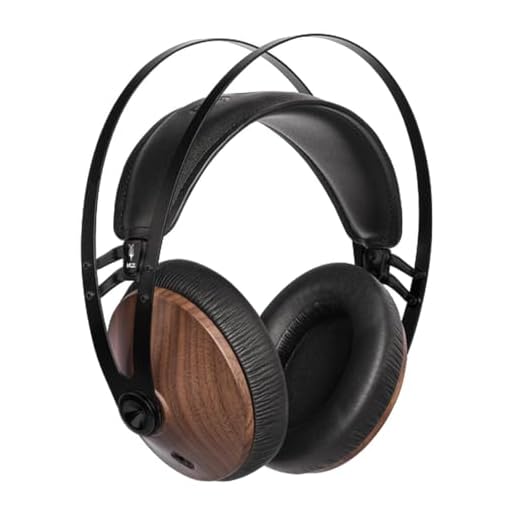
🧠 Why These Moments Matter
These aren’t just technical differences—they’re emotional ones. Wired playback preserves the breath, space, and nuance that make music immersive. Bluetooth, by design, compresses and reshapes the signal to fit a narrow pipe. The result? A version of the song that’s “almost” right—but never quite whole.
Even through the veil of YouTube’s own compression, the difference between wired and Bluetooth playback remains surprisingly audible—especially in tracks rich with layered instrumentation. When multiple elements like vocals, guitars, ambient pads, and percussion occupy distinct spaces in the stereo field, wired playback preserves their separation and depth, allowing each voice to breathe. Bluetooth, by contrast, tends to flatten this dimensionality, blending textures and softening transients. The result is a subtle but perceptible shift—from a living, spatial performance to a more compressed, two-dimensional rendering.
🎬 Conclusion – Fidelity Is a Choice
Bluetooth audio is a marvel of convenience—but fidelity was never its priority. Every codec, no matter how advanced, asks music to shrink to fit. Wired playback, by contrast, lets it breathe. It preserves the full spectrum, the transient bite, the spatial nuance—the emotional truth of the performance.
Even through YouTube’s own compression, the difference remains audible. Tracks like Josephine and Keep Talking reveal it in their layers: the shimmer of cymbals, the anchoring of vocals, the bloom of a solo across the stereo field.
Wired playback honors these moments. Bluetooth reshapes them. This post is a tribute to the signal in its fullness—and a quiet invitation to listen deeper.

